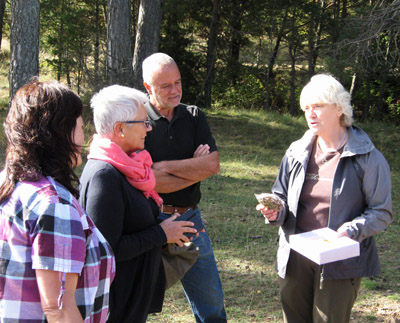Forest ownership is changing across Europe. In some areas a growing number of so-called “new” forest owners hold only small parcels, have no agricultural or forestry knowledge and no capacities or interest to manage their forests, while in others new community and private owners are bringing fresh interest and new objectives to woodland management. This diversity and change creates implementation problems for forest-related policies including biodiversity conservation, timber and renewable energy supply, climate change mitigation, or recreation.
|
FACESMAP participants @ Sopron, April 2013 |
Scientific advancements are expected through:
|
|
Practical added-value will be provided by:
|
Stakeholder Interaction @ Solsona, October 2013 |
The interdisciplinary work will be done in close cooperation with relevant public and private stakeholders. COST Action FP1201 is suited for the strongly needed but still lacking comprehensive European overview and analyses.
- To analyse attitudes and constraints of different forest owner types in Europe and the ongoing changes (outputs: literature survey, meta-analyses and maps).
- To explore innovative management approaches for new forest owner types (outputs: case studies, critical assessment).
- To study effective policy instruments with a comparative analysis approach (outputs: literature survey, case studies, policy analyses).
- To draw conclusions and recommendations for forest-related policies, forest management practice, further education and future research.
These objectives will be addressed by themes organized around three working groups (WGs).

